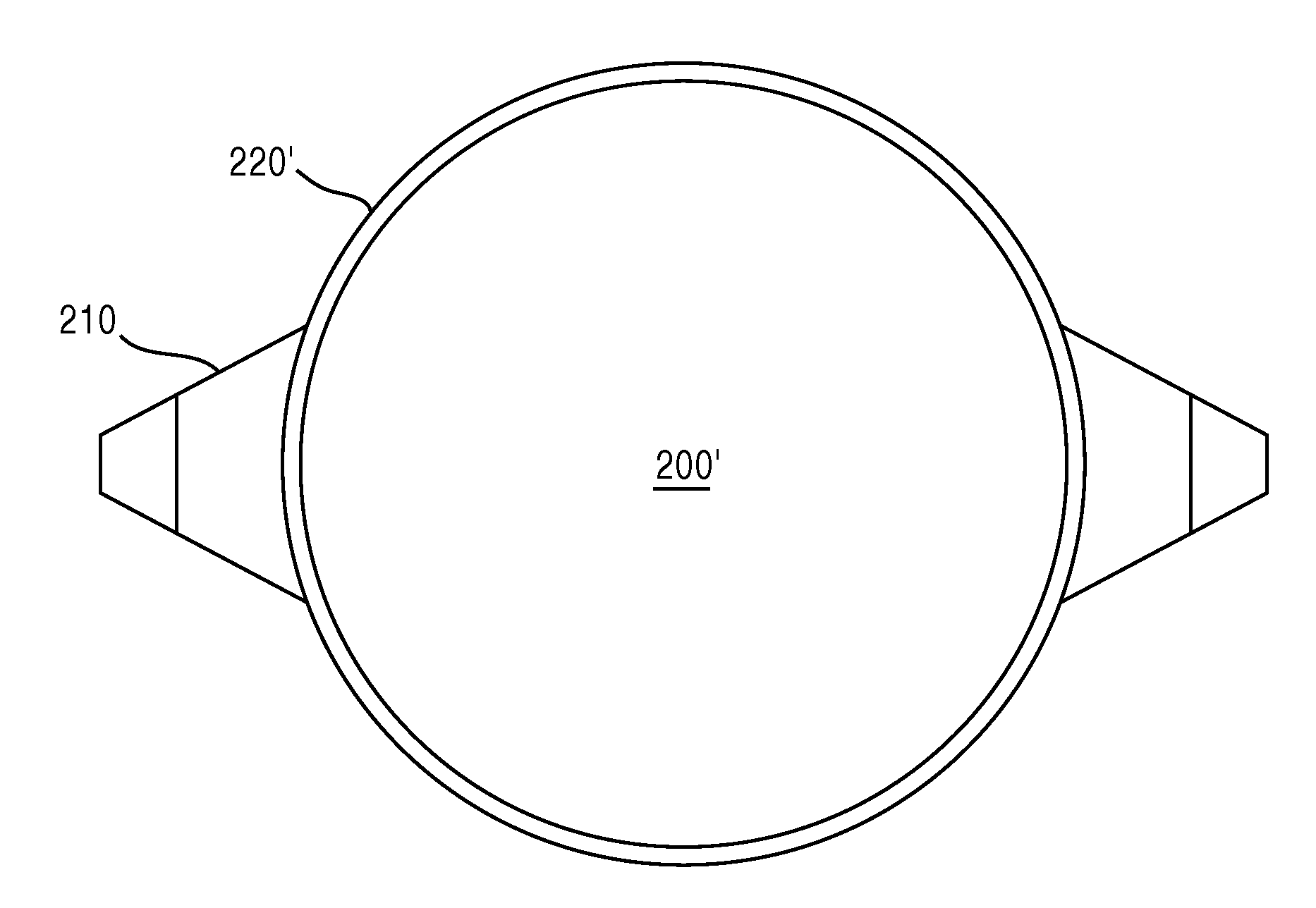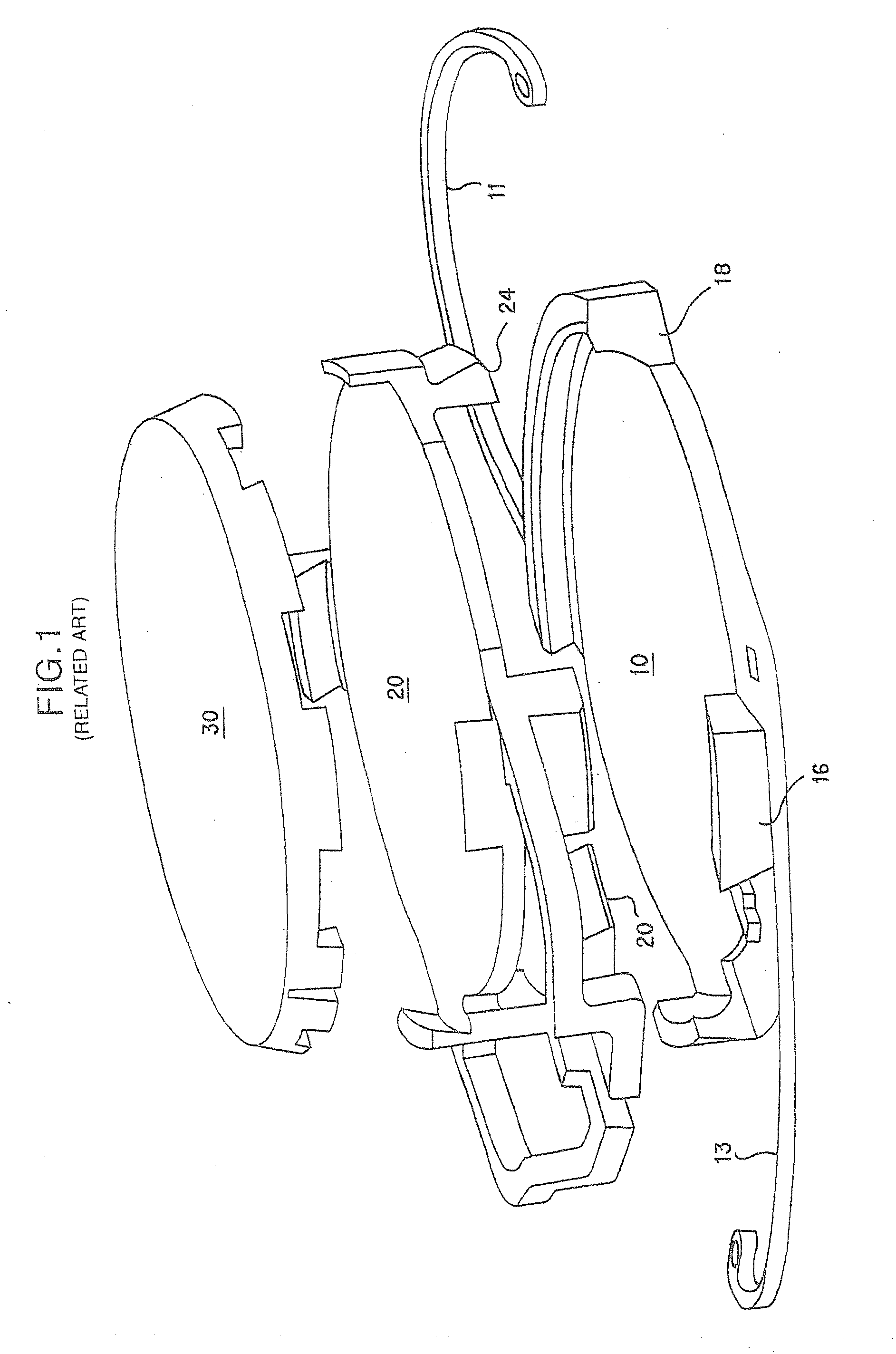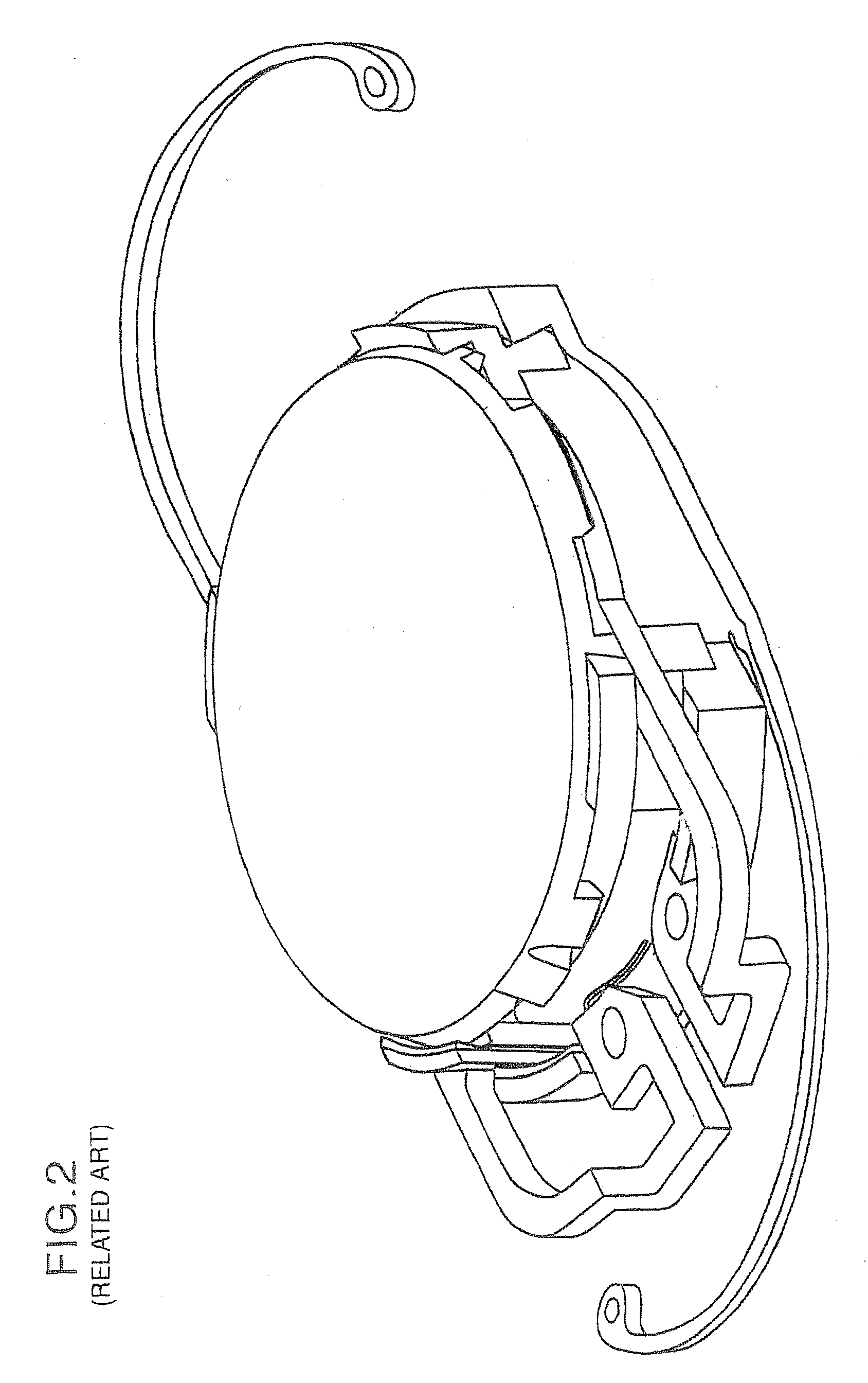Intraocular lens system
a technology of intraocular lens and eye, which is applied in the field of intraocular lens system, can solve the problems of corneal refractive surgery, lack of post-operative refractive accuracy, and current procedures and methods used by refractive surgeons may not meet the total refractive needs of patients, so as to simplify the surgical procedure for intraocular lens component insertion, minimize eye trauma, and minimize the effect of trauma
- Summary
- Abstract
- Description
- Claims
- Application Information
AI Technical Summary
Benefits of technology
Problems solved by technology
Method used
Image
Examples
Embodiment Construction
[0080]It should be noted that according to the preferred embodiments of the present invention, the fully assembled or end appearance of the base lens 1000 of the present invention is substantially similar to the base lens 100 and 100″ described above. Therefore, a detailed description of many of the common features of the base lens 1000 relative to the base lens 100 and 100″ is omitted herefrom in order to avoid redundancy.
[0081]As in the disclosure of the '875 and '364 applications, the foldable MC-IOL according to the present invention also includes one or more additional refractive components, including an assembly of a mid lens 2000 and a top lens 3000, described more fully herein. It should be noted that the top lens 300 and the mid lens 200 of the '875 application, as well as the mid lens 200′ and top lens 300′ of the '364 application, are similar to the mid lens 2000 and top lens 3000 described below, with the exception of certain distinguishing aspects.
[0082]For example, a c...
PUM
 Login to View More
Login to View More Abstract
Description
Claims
Application Information
 Login to View More
Login to View More - R&D
- Intellectual Property
- Life Sciences
- Materials
- Tech Scout
- Unparalleled Data Quality
- Higher Quality Content
- 60% Fewer Hallucinations
Browse by: Latest US Patents, China's latest patents, Technical Efficacy Thesaurus, Application Domain, Technology Topic, Popular Technical Reports.
© 2025 PatSnap. All rights reserved.Legal|Privacy policy|Modern Slavery Act Transparency Statement|Sitemap|About US| Contact US: help@patsnap.com



